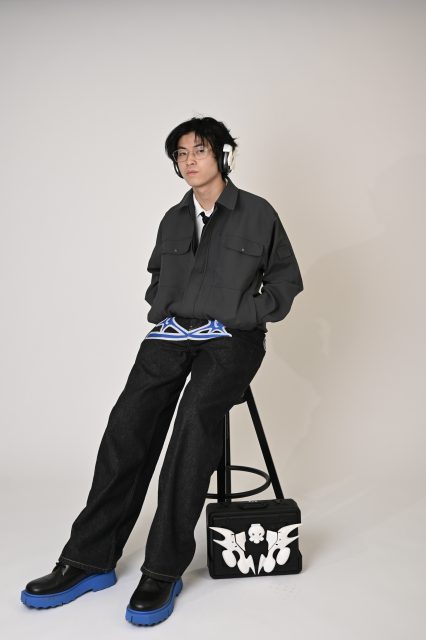“Look at me, I’m not buying something new, you must be really happy,” Rahul Mishra’s daughter Aarna proudly exclaimed to her father as they sat together a couple of weeks ago, mending her broken magic wand.
This endearing story that Mishra recounted with a father’s proud grin is evidence of the designer’s ethos, one which he employs both in the workplace and at home. Growing up in a humble household, Mishra would often observe and learn from his grandmother and mother. Reflecting on their sustainable practices, he chimes, “They would recycle every piece of fabric. They would recycle a sari and convert that into a bed cover. They would recycle curtains…they would mend almost everything possible.”
The New Delhi-based designer has always been known for his penchant for slow fashion, moving against the grain in an age where fast fashion has influenced and been influenced by consumers’ purchasing behaviours. Mishra’s eloquent description of his intricate network of artisans as a “making tree” (echoing the designer’s “Tree of Life” Collection for AW22 Couture Week) elaborates on the importance of slow work in the atelier: “one, it is beautiful for nature, for sustainability. It also creates cultural sustainability…employs more and more people…like a beautiful balance in society…For me, this kind of fashion is really powerful. And…very close to my heart.”
View this post on Instagram
Mishra catches sight of the embroidered flower on my top (worn, of course, by no accident) and expertly translates its production into working hours. He elaborates, “If I machine embroider it, it might create 20 human hours of job. If I hand embroider it, it’s going to create 1000 human hours a job.” This keen observation is not only a reflection of how much the designer values artisanship, but also the people behind the craft. Human relationships form the beating heart of Mishra’s eponymous label. Not only does the couturier provide a web of employment in various villages in India, he treats his team like family. Through creating a community, he ensures that each individual artisan feels appreciated and is seen for their craft in a supportive working environment.
His “We, The People” collection is a clear testament to his admiration for his workers, in which self-portraits of the artisans were etched into the very fabric of the garments. The mæstro fondly recalls the words of one of his workers, “there’s an embroiderer who works with (his) left hand. So he always points out, ‘This is me, this guy who works with (his) left (side), only I can work with (my) left (side).”
View this post on Instagram
Businesses do not exist without their people, and for this very reason, Mishra feels that there is a responsibility for brands to generate employment. In speaking about a newspaper article with a glaring headline claiming that India’s population would surpass China’s, he recalls that a sudden strange feeling overcame him. “Population is a major problem which a country like India has…so many people to feed, too many to take care of and limited resources,” he explains. “But then I started feeling what the population really means to us, as a brand…Then I realised the brand would’ve looked very different, may have not even existed, if people were not there. They are the ones who are creating the brand, you know, it’s like created by them for themselves in a way. And that is where “We, The People” started.”
As a determined advocate for reverse migration, Mishra ensures that his workers are satisfied in the workplace and that the conditions are pleasant, whether this be sanitation in the atelier or employee accommodation. With a profound sense of sympathy, he shares his concern about the alarming conditions detailed in a New York Times article about the slum districts of Mumbai. “In a small room, this big a room”, he illustrates motioning to the office he sits in, “50 of them would sleep, work, live there. There is no toilet. There’s no sanitation. There’s hardly drinking water over there…one meal a day.”
Rahul shares his thoughts on the hopeful future of sustainability in the industry, emphasising that more and more designers are now looking to subscribe to the same practices of reverse migration and opting for a slower course in garment-making. Mishra’s dinner with Mr. Henri Pinault (chairperson of Kering) revealed discussions of new “initiatives which are going to be more localised in the villages within India”, a project the designer described as “a wonderful thing.”
Speaking of the future, what’s next for Mishra? He reveals what upcoming projects to expect for the label. In the works is the release of a Ready-to-Wear collection in the coming September, which he wittily dubs as “Easy to Wear”. He plans to open stores in Europe as well as expanding to the Chinese market in the near future in order to seek a “consolidation of retail” and “[create] brand experience.”
Read Next
Andrew Mok, aka Offgod, On His “Bandage Boy” Debut Collection And Chasing Dreams
Editor
Christy LamCredit
Lead Image: Foc Kan/WireImage via Getty Images



